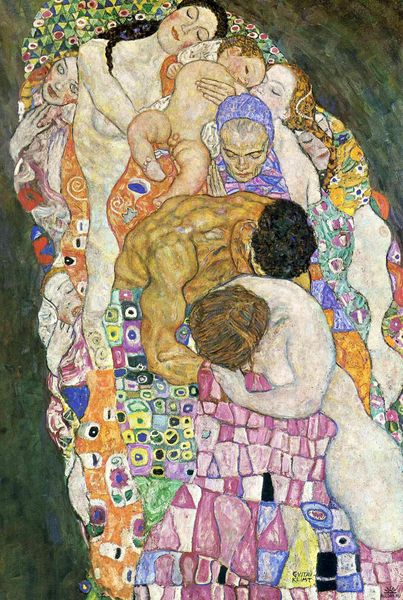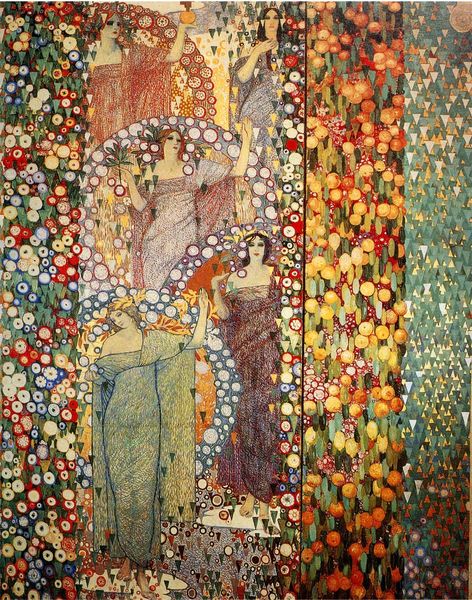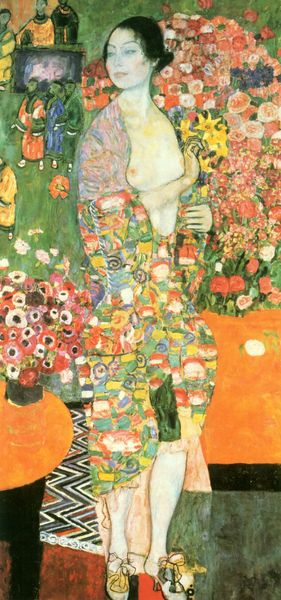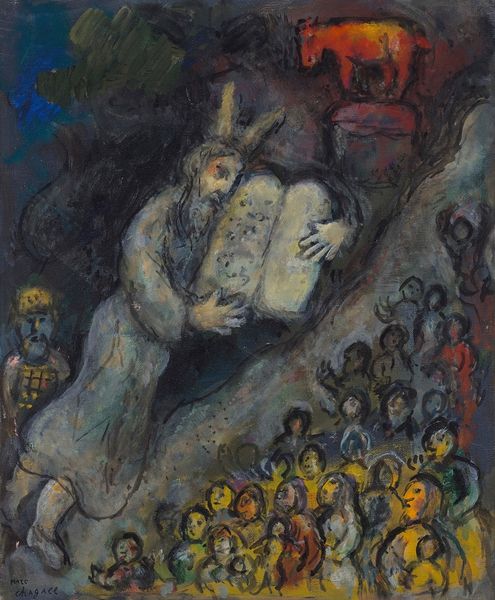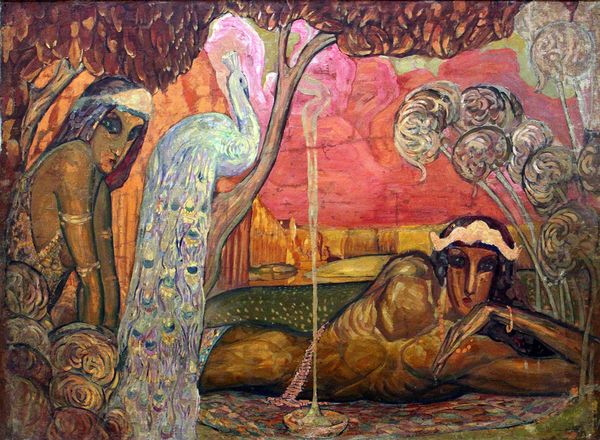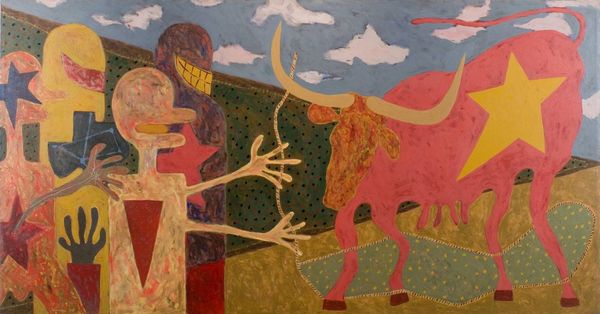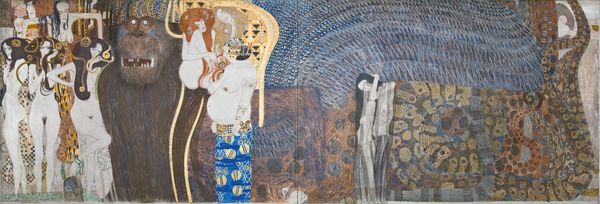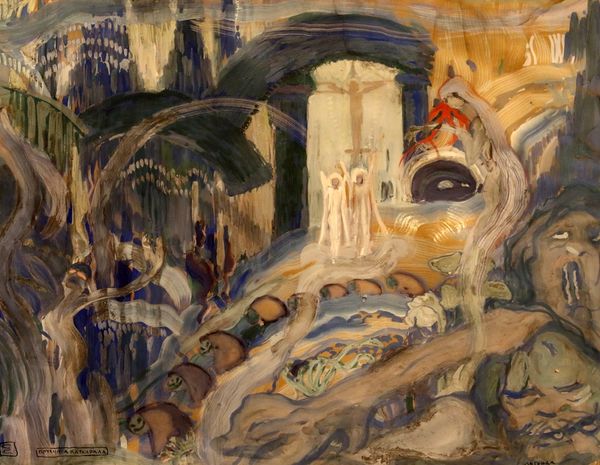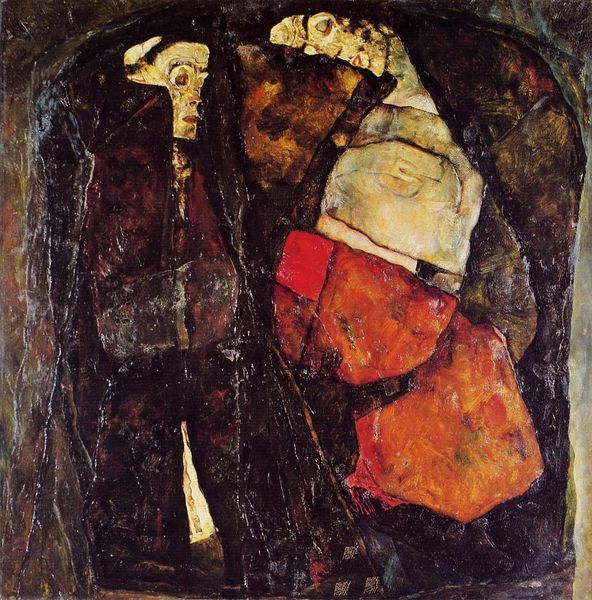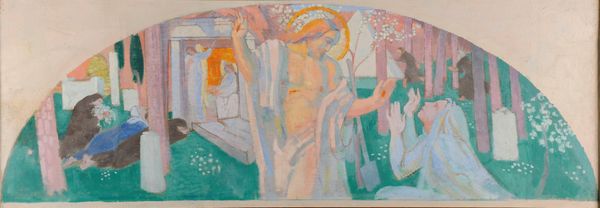
painting, oil-paint, textile
#
allegories
#
art-nouveau
#
allegory
#
symbol
#
painting
#
death
#
oil-paint
#
textile
#
figuration
#
symbolism
#
painting art
#
history-painting
Dimensions: 178 x 198 cm
Copyright: Public domain
Editor: So, this is Gustav Klimt's "Death and Life," painted in 1916. The contrast between the figures is really striking – one side dark and morbid, the other a vibrant swirl of bodies. How do you read this composition in its historical context? Curator: Well, considering Klimt’s social position and the era, we need to think about the First World War. Austria, as part of the Austro-Hungarian Empire, was deeply involved. Do you see echoes of societal anxiety reflected in the artwork itself? Editor: Absolutely. Death is so... isolated. It's physically separate from the throng of life, but also carries these stark religious symbols on his shroud like warnings of past societal expectations clashing with modernity. Curator: Precisely. And think about how that 'Life' section is clustered – almost defensively, wouldn’t you agree? This work speaks to the fragility of existence amidst immense social upheaval. Klimt had a large female following; the nude subjects might symbolize free love as rebellion to a rigid society that dictated oppressive rules. Editor: That's insightful. I hadn’t considered the huddled nature of life as a response to threat. Were contemporary viewers as attuned to those anxieties? Curator: Likely, yes. Klimt's popularity stemmed from his ability to visualize complex emotions and societal undercurrents in ways that resonated with the public, whether consciously or subconsciously. But the image of death feels very much based in societal understandings of it, right? Editor: It's fascinating to see how personal artistic expression intersects with broader historical events. I definitely see this piece differently now. Curator: That intersection is where art becomes a potent historical document. Art, museums, socio-political powers shape its production, reception and interpretation. Thinking of this painting's public role, and the politics of the imagery, enhances its appeal today.
Comments
No comments
Be the first to comment and join the conversation on the ultimate creative platform.
